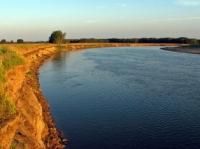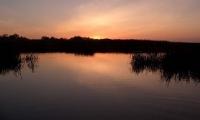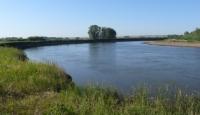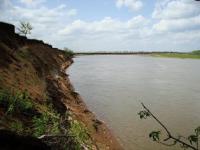You are here
Ural River Delta.





Tours in the West Kazakhstan region.
“The Ural River, according to zoological, geographical and topographical characteristics, cannot be separated from the Kyrgyz steppes. In a natural and historical respect, both banks of the Urals are the same, it does not distinguish anything, but simply flows along the Kyrgyz steppe”
N.A. Severtsov.
Boating in the Ural River Delta.
The Ural Delta begins at the village of Zeleny, more than 170 km to the modern mouth of the river. Its width gradually increases from 10-15 km at Zeleny to 60 km at the mouth. To the city of Atyrau, the Ural delta looks like a regular river valley.
Here, the outflows of Narynka and Baksai, which are filled with the waters of the Urals only in high-water years, are separated from the channel. Along the river, as well as in the lower reaches, there is a river bed floodplain with a width of 0.5 to 3 km, its height above the low-water level of the river is gradually decreasing and is from 6 - 7 m in the village of Topoli to 2 m in the village of Kandaurovka, located respectively for 156 and 24 km to Atyrau.
The upper and middle deltas located above Atyrau are mainly occupied by floodplain meadows. Reed and reed beds are common in low places. Wide depressions and hollows are covered with salted swampy meadows. On small manes and their slopes, slightly saline reed, licorice, and grassland meadows are developed.
The highest manes of the upper delta, composed of layered strata of mica sand with interbeds of bluish-brown clay and loam, are covered with wormwood. Thickets of tamarix have been preserved here. The closer to Atyrau, the more lively the banks of the Urals look.
Continuous garden-melon plantations, fruit orchards, forest nurseries, summer cottages begin. The beaches and shallow waters are occupied by resting livestock. Shaking their humps, camels walk along the Urals. Hundreds of small, dozens of large pipes and finally, powerful water intake stations of the main canals eagerly drink the Ural water.
In Atyrau, the river wears concrete, it flows freely and freely through the city, washing the city's yars. A beautiful automobile bridge - the last on the river - is thrown across the Urals. The lower delta of the Urals begins immediately after Atyrau after a branch of the left arm of Peretask.
The sleeves of Bukhark and Yaitsky are separated behind it. The egg sleeve is divided into a duct system, and itself, deepened in the form of a channel, goes to sea through the Ataman Kultuk. The main channel of the Urals is the Golden Sleeve, which passes into a straight navigable canal, which is constantly artificially deepened.
The golden sleeve goes in the middle of the spit, far extended into the sea. About 20 man-made ducts branch off from it to the right and left, connecting with the sea. But this whole system of sleeves, ducts and uzeks acts in floods. And in summer, the Urals run into the sea only on two branches.
More than 200 years ago, Pallas indicated 49 arms and many channels for the Ural delta. Since the time of Pallas, great changes have taken place at the mouth of the Urals. The delta advanced into the sea by almost 30 km. The Ural delta is characterized by a very unstable level regime.
It is explained by long-term and seasonal fluctuations of the Caspian Sea level. During the year, the water level at the mouth of the Urals can vary by 4 m. The wind-driven oscillations are especially interesting and well observed. Surgeons occur during southerly winds (Seamen), which reverse the Urals.
During the periods of driving, the shallow waters of the Caspian dry out, islands are expelled, which are completely covered with shell rock. The area of the lower Ural delta, according to recent data, is about 70 thousand ha. It also includes the Peshnaya Peninsula, which extends far into the sea.
The entire delta is bordered by reeds by reed beds. They are a solid wall along the ducts. The land, recently exited from under the sea, is intensively covered with salt-loving vegetation. A shoot of tamarix quickly appears here.
On the shallow coasts of the delta, where the overtaking phenomena are especially active, a peculiar strip of clear sandy shallow water and snow-white shell rock is formed. How beautiful these radiant beaches are on the Ural-Caspian seaside, just a day or two, or maybe an hour ago, freed from the sea waves.
The sea went 100 - 120 meters back, leaving behind a wonderful strip of land. Here the foot of a man has not yet set foot. Seashell seashells occupy not only coastal zones, but also the nearby islands, the so-called Shalygi. Being a valuable product for livestock breeding and raw material for the feed industry, shellfish is intensively developed.
But some of them located in the delta zone are protected as natural monuments. Their safety is necessary to maintain a favorable environmental situation on the Ural-Caspian coast. The delta shallow waters of the Caspian are desalinated by the Urals. They represent a unique nursery for fish trifles.
The river brings here a huge amount of fertile silt. Due to this, reed-cattail jungles, which are extended far into the sea, are rampant here. In well-heated water layers, underwater thickets from wallisneria and other aquatic plants develop. There are innumerable m fish with its huge beak, like a butterfly net.
The herons watch the fish, standing motionless in shallow water and carefully peering into the water. With a precise and quick blow of a sharp beak, they stun the fish, and then snatch it out of the water. In the Ural shallow waters, one can observe the combined hunts that ichthyophagous birds arrange.
Cormorants, diving, in dense formation drive fish under water. Pelicans chase the fish, flapping their wings, and seagulls, screaming dive to the water, attack the fish from the air. The second feature of the avifauna of the Ural-Caspian seaside is the concentration of a huge number of ducks, geese, swans and pink flamingos during molting. In the shallow waters of the North Caspian, east of the mouth of the Urals, birds that have lost the ability to fly find places abundant in food and protected from four-legged predators.
The first explorer of the northeastern Caspian G.S. Karelia, who made several sea voyages here in the 30s of the last century, drew attention to the mass accumulations of molting swans and flamingos. Many rare bird species nest in the delta zone of the Caspian.
This list alone convinces us of the need to create a bird sanctuary here. Concluding the story about the fauna of the Ural coast and the delta, we mention the seal - the Caspian seal - the endemic of the Caspian Sea. The seal has remained here since the time when the Caspian was part of a huge body of water that connected to the Arctic Ocean.
Seals spend summers in the deep sea. But some of them, lacking in food, enter the Ural delta. There were cases when seals climbed along the river to Saraichik, located 70 km above Guryev, and there they wintered, keeping ice openings all winter long. In the fall, tens of thousands of well-fed marine animals migrate to the northern desalinated water of Caspian, in the area of the so-called Guryev furrow. On moving ice floes, the Caspian seals, just like their northern counterparts, have a puppy.
Females give birth to one or two cubs covered with thick, soft white hair, for which they are called squirrels. Seals are an integral part of the ecological system of the Ural delta. This valuable marine animal has long been hunted. Seals, fat, fur and skin are important products of the Atyrau Hypericum.
These are, in general terms, the natural features of the Ural valley on its long journey from mountain forest foothills to the desert-salty Caspian. The living current of the Urals and its tributaries and, in particular, the spring flood wave unites this entire territory into a single ecological system.
Authority:
A.A. Chibilev. "The Ural River." Leningrad. Hydrometeoizdat, 1987.
Photos
Alexander Petrov.







